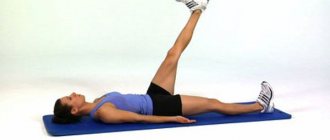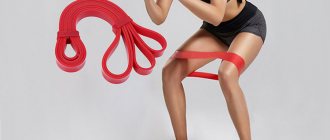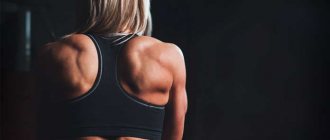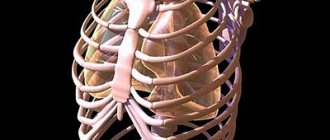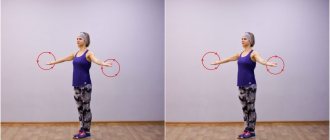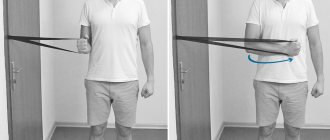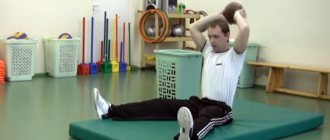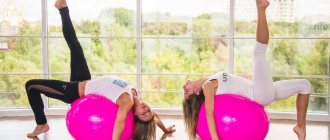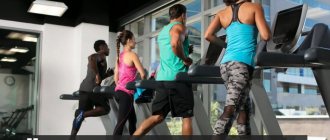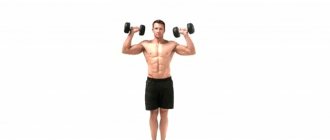Performing stretching exercises for the neck muscles is extremely beneficial because they improve blood circulation and relieve tension in the cervical region. The muscles of the neck are not only responsible for its agility, they also constantly support the head in the desired position.
Working at a computer for a long time, which requires considerable concentration, an uncomfortable workplace, sleeping in an uncomfortable position are the most popular factors that can cause headaches or discomfort in the neck. This is why it is so important to stretch your neck. After stretching the neck muscles, your head becomes clear, you are filled with strength and new ideas. Agree, it is better to devote fifteen minutes every day to physical exercise than to constantly suffer from periodic or constant physical pain due to a sedentary lifestyle.
Stretching exercises for the neck muscles are recommended not only for those who are familiar with sports, but also for those who do not often engage in active activities. We offer you a set of exercises that will have a positive effect on your neck: improve blood circulation, prevent or relieve pain in the neck and relax its muscles. For best results, neck stretching exercises should be performed regularly.
Neck rotation
The exercise is best performed sitting with a straight back, hands on your knees. Turn your head to the side, relax your neck, and slowly roll your head from one side to the other. Do the same by throwing your head back. After several approaches on each side, make a full rotation of your neck in one direction and the other.
Important: Do not force yourself in this exercise. The neck should be relaxed. If you experience any discomfort or pain, stop the exercise immediately.
Warm-up with neck stretching
- Stand up straight, look straight ahead.
- Keep your elbows straight and your arms in place to prevent your shoulders from moving during the stretch.
- Slowly turn your neck towards your shoulder until it stops.
- Maintain this position for 10-30 seconds.
Variations:
As you twist your head, lift your chin up slightly to place more emphasis on the sternocleidomastoid muscle.
Muscles involved: Upper trapezius Sternocleidomastoid Splenius capitis
According to doctors, osteochondrosis of the spine is treated by stretching it. Special exercises that are performed correctly and honed are effective in the treatment and prevention of osteochondrosis. Stretching relieves tension and discomfort.
Stretching the oblique muscles of the neck
Without changing your sitting position, turn your head to the right 45 degrees, pointing your ear towards your chest, tilt your head down. You can help yourself with your hand, swinging your head with smooth movements. Hold the head position at maximum tension for two seconds. Then repeat the exercise on the other side, also moving your head 45 degrees back - to the right and left.
Important: the body must be motionless, do not raise your shoulders, only move your head.
By regularly performing these simple neck stretching exercises, you will feel positive results within a few days. But don’t forget about proper lifestyle, nutrition and good mood!
Iron Health
Stretching exercises for the neck muscles can improve blood circulation in the neck and also relieve tension. The exercises below are recommended to be performed not only by athletes, but also by people far from sports. In all cases, these exercises will be extremely beneficial for you.
The best exercises to stretch the neck muscles
There are several best exercises that can give you a great stretch for your neck muscles. These include:
- Neck rotation
- Neck tilts back and forth
- Neck bends to the sides
- Diagonal neck bends
Below we will consider the detailed technique for performing each of them.
Movement #1 – Neck Rotation
- Sit on a chair and relax your neck muscles;
- Lower your head so that your chin touches your chest;
- Start rolling from the middle to the chest to the edges, trying to look over your shoulder each time;
- Hold for 2 seconds in the right and left positions, thus performing 10 movements in each direction.
- Next, tilt your head back and begin to roll it from your right to your left shoulder;
- Complete 10 reps.
Movement No. 2 – Bends forward and back
Target muscles : anterior and posterior neck muscles (flexors and extensors)
Anterior muscle stretch:
- Sit on a chair and straighten your back;
- Place your fingertips under your chin;
- Begin to slowly tilt your head back, slightly helping yourself with your fingers;
- Try to keep your shoulders motionless and not rise up;
- At the point of greatest stretch, fixate for a couple of seconds and return to the starting position;
- Do 10 repetitions in this manner.
Posterior muscle stretch:
- In the same sitting position, place your hands behind your head;
- Begin to lower your head to your chest, helping it slightly with your hands at the very end of the movement;
- Make sure your shoulders rise up;
- At the point of greatest stretch, fix your position for 2 seconds and return to the starting position;
- Complete 10 reps.
Movement No. 3 – Side Bends
This movement is aimed at stretching the lateral muscles of the neck.
- Sit on a chair and straighten your back;
- Begin to tilt your head, trying to touch your ear to your shoulder;
- Help yourself slightly with your hand, tilting your head in the right direction;
- The shoulders should not rise;
- Perform 10 reps on each side.
Movement No. 4 – Rotation left and right
This exercise is aimed at stretching the rotator cuff muscles.
- Sit on a chair and straighten your back;
- Start turning your neck to the side until your chin is above your shoulder, you can help yourself a little with your hand;
- Make sure to keep your body and shoulders still;
- Perform 10 repetitions for the left and right sides.
Movement No. 5 – Diagonal neck bends back and forth
These movements stretch the muscles of the upper shoulder (including the trapezius) and the flexor muscles of the neck.
Upper Shoulder Stretch:
- Sit on a chair and straighten your back;
- Turn your head to the right at a 45-degree angle, then tilt your head forward, pointing your right ear toward your chest.
- During the movement, you can help yourself with your hand, slightly pressing your head;
- Avoid movements in your shoulders and body;
- Perform 10 repetitions for the right and left sides.
Neck flexor stretch:
- Take a sitting position on a chair with your back straight;
- Turn your head to the right at a 45-degree angle and tilt it back, pointing your right ear toward your shoulder;
- You can help yourself a little with your hand;
- Try to keep your shoulders and body motionless;
- Perform 10 repetitions on each side.
Other
Useful tips
In addition to gymnastics, if you suffer from joint diseases, experience severe pain in the evenings, and cannot walk for a long time, then you should use the drug “Artrofish” for treatment.
Its components include shark and stingray cartilage, which restore cartilage tissue. As a result, the patient gets rid of pain, stiffness disappears, and with regular use you will completely forget what joint pain is.
Upon completion of clinical trials of the drug, it was found that it is highly effective. To achieve this, just take two capsules twice a day. And after ten days, patients feel significant relief in the affected area.
The course of taking the drug is 30 days. But to strengthen the result, it should be repeated after a month.
I hope you found useful information in this article. Stay in touch by subscribing to blog updates and recommend the material to your friends. See you!
Sincerely, Vladimir Litvinenko!
How to do yoga exercises
Follow the rules carefully and do not hold your breath. Maintain each pose for 30 seconds.
Half bend forward with emphasis on the wall (simplified uttanasana)
Stand straight, two steps away from the wall, facing it. Place your feet hip-width apart for comfort. From this position, bend at the hip and lean forward with a straight back to a 90° angle between your body and legs. Place your hands on the wall.
Try to straighten and stretch your spine as much as possible. Hold the pose for 20–30 seconds.
Warrior Pose II (Virabhadrasana)
Stand up straight, spread your legs wide, point your toes forward, raise your arms to the sides, connect and straighten your fingers.
Turn your right foot 90° to the right. Bend your right leg at the knee to a right angle or close to it, and move your left leg back. Distribute your weight between both legs.
Twist your pelvis, stretch your back, lower your shoulders. Try to open your pelvis and chest. Repeat the pose on both sides.
Twisting (Bharavajasana)
Sit on the floor, bend your right leg at the knee, point your shin outward and place your heel next to your pelvis. Bend your left leg at the knee, place your left foot on your right thigh.
Distribute your weight between your two sitting bones and lengthen your spine upward. Place your right hand on your left knee and turn your body and head to the left, grab your left toe with your left hand. Repeat on the other side.
Muscles - neck flexors[edit | edit code]
Stretching the neck flexor muscles
What are you stretching:
Anterior neck muscles (anterior neck flexors)
What are you abbreviating:
Posterior muscles of the neck (cervical extensors) and upper back (erector erector muscles)
How many times to repeat:
10
How long to hold:
2 seconds
Sit on a chair with your back straight and your feet flat on the ground. Place the fingertips of both hands under your chin and gently tilt your head back. At the end of the movement, you can help a little with your fingers. Shoulders should not rise.
Note
. 0° = 12.00.
| Range | Position on the dial | Range of motion degree |
| Red range Too tight | 12.00-1.00 | 0°-30° |
| Yellow range Normal | 1.00-1.30 | 30°-45° |
| Green range Athlete's norm | 1.30-2.00 | 45-60 |
| Blue range Hypermobility | 2.00-3.00 | 60-90 |
Exercise No. 3 “Half-frame”
Take your shoulder with your hand and pull it towards you, while pressing on it with your chin. It is necessary to tighten the scalene muscles on the front surface of the neck. 5 times in each direction for 5–7 seconds. If you did everything correctly, you will soon feel pleasant sensations.
Click to enlarge. Photo: AiF/Eduard Kudryavitsky
Longitudinal neck stretch exercise
Lateral neck bends target the trapezius muscle. Stretching is useful for people who suffer from muscle compression in the upper back and neck, as well as for those who work at a computer. This stretch is also suitable for cervical osteochondrosis.
- Look straight ahead, keep your chin straight.
- Tilt your head to the side, stretch your ear to your shoulder as close as possible. Don't raise your shoulder.
- Stay in this position for 10-30 seconds.
Variations: Use your hand to perform the exercise. Create resistance between your head and hand.
Muscles involved: Upper trapezius, splenius
Muscles - neck extensors[edit | edit code]
Neck extensor stretch
What are you stretching?
Posterior muscles of the neck (cervical extensors) and upper back (erector erector muscles)
What are you abbreviating:
Anterior neck muscles (anterior neck flexors)
How many times to repeat:
10
How long to hold:
2 seconds
Sit on a chair with your back straight and your feet on the floor. Place your hands behind your head, lower your head so that your chin touches your chest. At the end of the movement, you can help a little with your hands, pushing your head. Shoulders should be down.
Note
. 0° = 12.00.
| Range | Position on the dial | Range of motion degree |
| Red range Too tight | 12.00-11.00 | 0-З0 |
| Yellow range Normal | 11.00-10.00 | 30-60 |
| Green range Athlete's norm | 10.00-9.30 | 60°-75“ |
| Blue range G hypermobility | 9.30-9.00 | 75°-90 |
Diagnostics
First, the doctor carefully examines the patient, performing careful palpation and studying external changes (swelling, cyanosis). Most often, to clarify the degree of sprain and establish possible causes (pathology of the cervical vertebrae: hernia, dislocation, subluxation), doctors give a referral to:
- X-ray of the cervical spine;
- MRI;
- ultrasonography;
- CT scan.
Such instrumental diagnostic techniques can clarify the presence of muscle tears, factors that provoke sprains (intervertebral hernia of the cervical spine, dislocation and subluxation of the cervical vertebrae, arthrosis and fibromyalgia), compression of nerves and blood vessels. Based on the diagnosis, the doctor prescribes treatment that is most suitable for the patient.
Basic therapy methods
When choosing treatment methods, the doctor takes into account the degree of tissue damage, the stage of development of the inflammatory process, and the general health of the victim. During the first 3-4 days of therapy, any thermal effects on the injured area are excluded. This is the mistake people often make when trying to eliminate pain. They apply a heating pad with hot water, rub ointments with a warming effect or alcoholic herbal tinctures into the skin. This leads to an increase in temperature in pathological foci and the rapid spread of inflammatory edema to healthy tissue.
When stretching, you only need to apply cold!
Non-drug treatment
Traumatologists prescribe the wearing of Shants collars, selecting their sizes individually for patients. Why is it necessary to use orthopedic devices:
- reducing the intensity of pain;
- eliminating any load on the cervical spine;
- increasing the distance between the vertebrae;
- reducing the risk of careless head movement, which increases microtrauma;
- improvement of blood circulation and microcirculation in the neck area.
Shants collar.
To relieve pain, it is necessary to use only cold compresses in the first days: a heating pad with cold water, a bag of ice cubes, wrapped in a thick cloth. The duration of the treatment procedure is no more than 15 minutes per hour. Otherwise, the likelihood of frostbite and inflammation of the cervical lymph nodes, manifested in their soreness and swelling, increases.
Use of pharmacological drugs
Nonsteroidal anti-inflammatory drugs (NSAIDs) are the first choice drugs for treating neck strains. For acute pain, tablets, dragees, capsules are used - Ibuprofen, Nimesulide, Meloxicam, Ketorolac, Ketoprofen. They must be combined with proton pump inhibitors (Omeprazole, Pantoprazole, Esomeprazole) to prevent damage to the gastric mucosa. To eliminate moderate pain, from the first day of therapy, NSAIDs are prescribed in the form of gels and creams:
- Nurofen;
- Nise;
- Dolgit;
- Finalgel;
- Ketonal.
In the treatment of sprains, the Indovazin gel, which contains the venoprotector troxerutin and the NSAID indomethacin, has proven itself well. The drug is included in therapeutic regimens to suppress the severity of pain, reduce the temperature in the pathological focus, reduce inflammatory swelling, and quickly eliminate hematomas.
Troxevasin, Troxerutin, Lyoton, and Heparin ointment gels are also used to resolve bruises.
If fiber ruptures provoke muscle spasms, then patients are prescribed muscle relaxants Mydocalm, Sirdalud, Baclofen. Medicines relax skeletal muscles while relieving pain and stiffness.
In case of serious injury, chondroprotectors Teraflex, Structum, and Chondroxide are used. Taking the drugs for 2-3 months promotes the regeneration of muscle tissue, eliminating discomfort, swelling, and hyperemia.
After the inflammatory process has stopped (approximately on the 3-4th day of treatment), local application agents with a warming effect are used. These are Viprosal, Apizartron, Nayatoks. Their active ingredients stimulate blood flow to damaged muscles, accelerating metabolic and regenerative processes.
